Vegetarian Sushi Rolls Easy and Flavorful Recipe
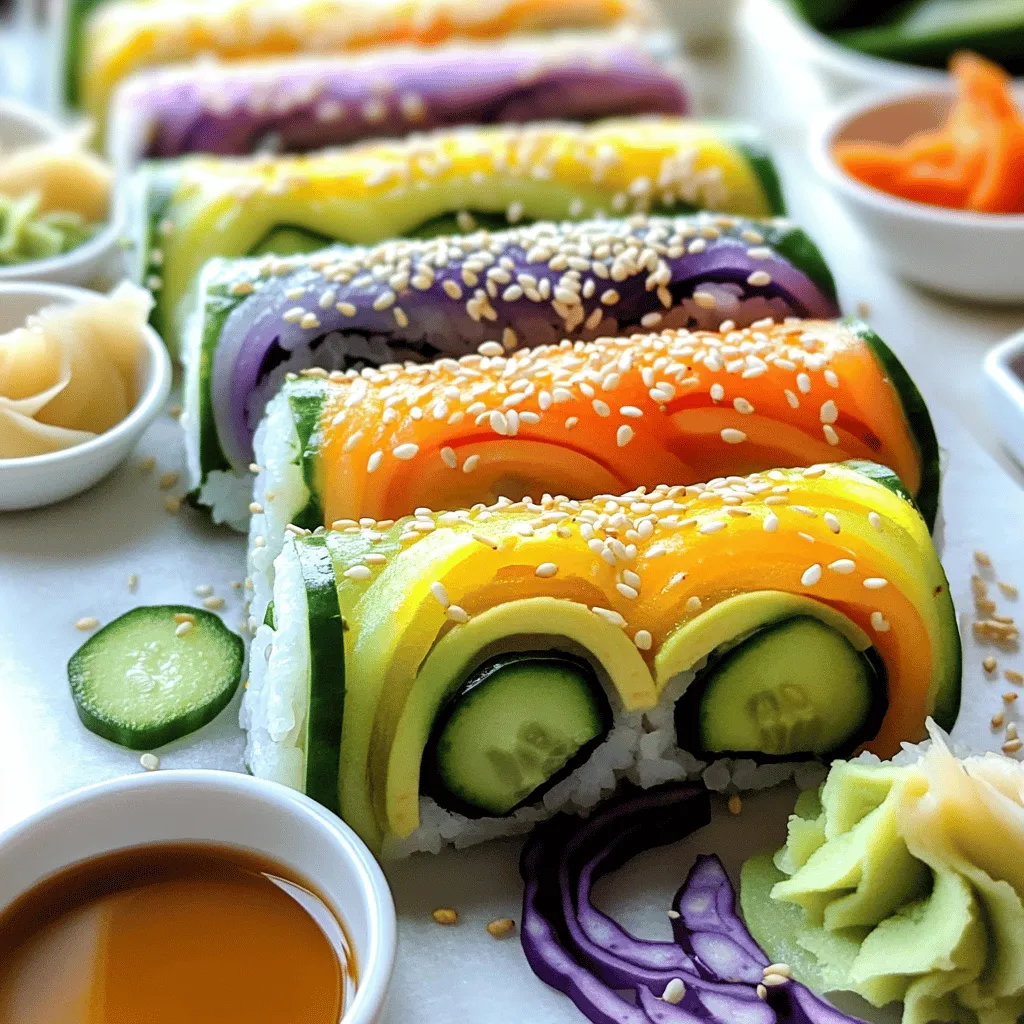
Are you craving a sushi experience that’s fresh and plant-based? Look no further! In this article, I’ll share an easy and flavorful recipe for vegetarian sushi rolls. With simple ingredients like sushi rice, fresh veggies, and nori sheets, you’ll be rolling your own sushi in no time. Plus, I’ll provide tips and tricks to make your rolls perfect. Let’s dive in and discover a delicious way to enjoy sushi!
Ingredients
Essential Ingredients for Vegetarian Sushi Rolls
To make delicious vegetarian sushi rolls, you need a few key ingredients:
– 1 cup sushi rice
– 1 ¼ cups water
– 2 tablespoons rice vinegar
– 1 tablespoon sugar
– 1 teaspoon salt
– 4 nori sheets
– ½ cucumber, julienned
– 1 large carrot, julienned
– 1 ripe avocado, sliced
– ½ bell pepper (any color), sliced into thin strips
– ½ cup purple cabbage, thinly sliced
These ingredients form the base of your rolls. Sushi rice is sticky and holds everything together. Nori sheets wrap around the filling for a perfect bite.
Optional Ingredients for Flavor and Variety
You can add extra flavors to your sushi rolls:
– Pickled ginger and wasabi
– Sesame seeds
Pickled ginger adds a zesty kick. Wasabi gives a nice heat. You can sprinkle sesame seeds on top for crunch and flavor.
Nutritional Benefits of Ingredients
Vegetarian sushi rolls offer many health benefits. Sushi rice provides carbohydrates for energy. It also contains some vitamins and minerals. The fresh vegetables add fiber, vitamins, and antioxidants.
Eating colorful veggies boosts your health and keeps you full. This dish is not only tasty but also good for your body.
Step-by-Step Instructions
Preparing the Sushi Rice
To make great sushi, start with the rice. Rinse 1 cup of sushi rice under cold water. Keep rinsing until the water is clear. This step removes extra starch, which helps the rice cook better.
Next, cook the rice. You can use a rice cooker or a saucepan. If using a rice cooker, follow the instructions. For a saucepan, combine the rinsed rice with 1 ¼ cups of water. Bring it to a boil. Then, reduce the heat, cover it, and let it simmer for about 20 minutes or until all the water is gone.
Once the rice is cooked, let’s season it. In a small bowl, mix 2 tablespoons of rice vinegar, 1 tablespoon of sugar, and 1 teaspoon of salt. Heat this mixture in the microwave for about 30 seconds. Stir until the sugar and salt dissolve. Once the rice cools, gently fold the vinegar mixture into the rice using a spatula.
Assembling the Sushi Rolls
Now, let’s roll! Place a bamboo mat on a flat surface. Lay a sheet of nori on top, shiny side down. Before touching the rice, wet your hands with a little water to stop it from sticking.
Take a handful of your seasoned sushi rice and spread it evenly over the nori. Leave about a 1-inch space at the top. Now it’s time for the fun part—adding fillings! Place julienned cucumber, carrot, avocado, bell pepper strips, and purple cabbage in the center of the rice-covered nori. You can mix colors and textures for a bright look.
To roll the sushi, start at the edge closest to you. Lift the bamboo mat and roll it tightly away from you. Apply even pressure to keep the roll firm. When you reach the 1-inch border at the top, seal it by wetting the edge of the nori with water.
Cutting and Serving
Now, let’s cut your sushi rolls! Use a sharp knife and wet it before slicing. This helps to avoid sticking. Slice the roll into 6-8 pieces. Clean the knife with a damp cloth after each cut for neat slices.
For a beautiful presentation, arrange the sliced rolls on a colorful platter. You can sprinkle sesame seeds on top for extra flavor. Serve with soy sauce for dipping, and add pickled ginger and wasabi if you like some heat. Enjoy your rainbow veggie sushi rolls! For the full recipe, check the complete instructions above.
Tips & Tricks
Common Mistakes to Avoid When Making Sushi
Issues with rice texture
One main issue is overcooked rice. This can make it mushy. Always rinse the rice until the water runs clear. This helps remove starch. Undercooked rice can also be a problem. It should be tender yet firm. If your rice is too dry, it won’t stick together.
Problems with rolling technique
If you roll too tightly, the filling can squish out. This messes up the look and taste. If you roll too loosely, your sushi will fall apart. It’s key to find a balance. Use the bamboo mat to help with even pressure.
Perfecting Your Sushi Rolling Technique
Using a bamboo mat effectively
A bamboo mat makes rolling easier. Start by placing the nori on the mat. Use damp hands to spread the rice evenly. Leave about an inch at the top. This will help seal the roll.
Tips for keeping the nori fresh
Nori can dry out quickly. Keep it in an airtight container until you’re ready to use it. If it’s too dry, it won’t roll well. Use it as soon as you can for the best flavor.
Ideas for Unique Flavor Combinations
Mixing vegetable types and seasonings
Try mixing different veggies. You can add bell peppers, carrots, or even mango. Each adds its own flavor. Adding a sprinkle of salt or a dash of soy sauce can enhance taste.
Incorporating herbs and spices
Fresh herbs like cilantro or basil can add freshness. A touch of chili flakes can bring heat. Experiment with flavors to find your perfect mix. Try adding sesame oil for a nutty taste.
For more detailed steps, check the Full Recipe.
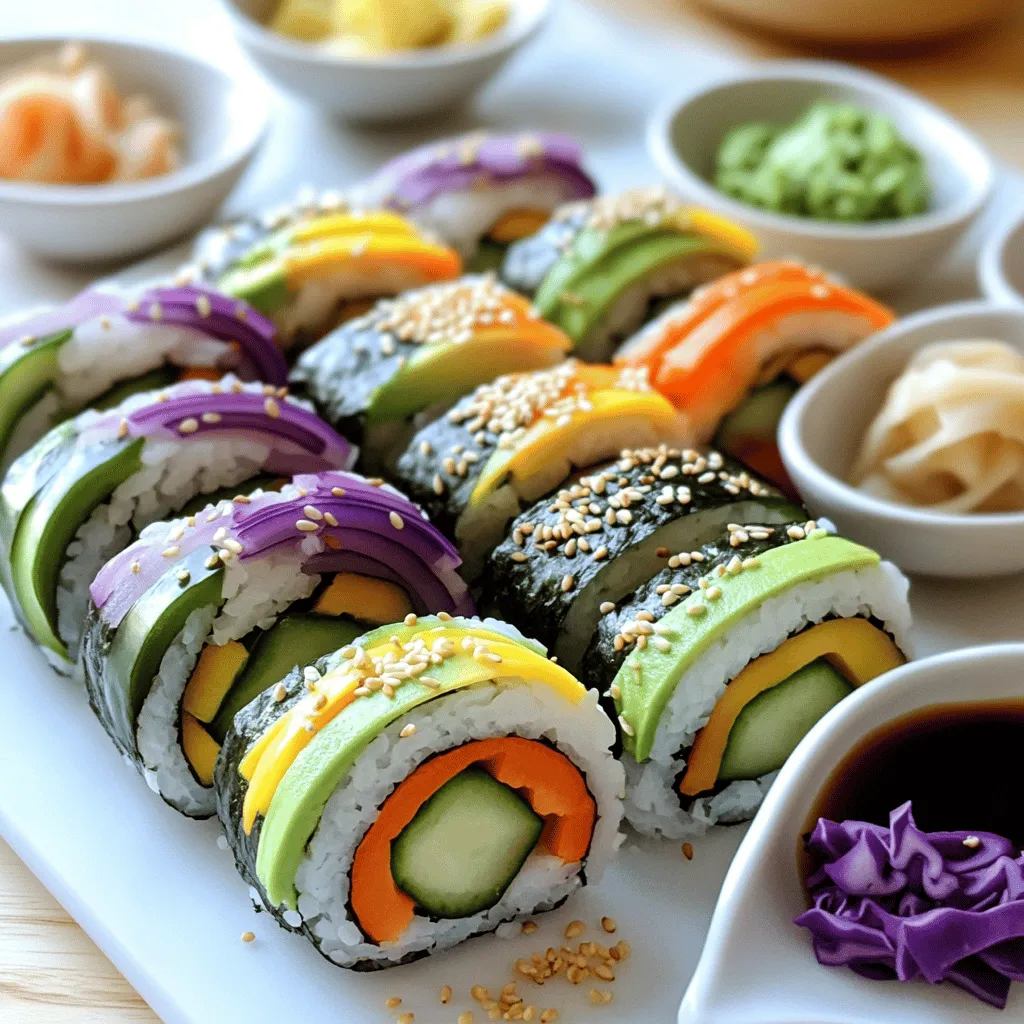
Variations
Different Types of Vegetarian Sushi Rolls
I love creating different types of vegetarian sushi rolls! Two popular choices are California rolls and spicy avocado rolls.
– California Rolls: These rolls often use imitation crab, but you can replace it with avocado and cucumber. The creamy avocado pairs well with the crunchy cucumber. This classic roll is perfect for sushi beginners.
– Spicy Avocado Rolls: For a kick, try spicy avocado rolls. Just mash ripe avocado with a bit of sriracha. This adds heat and flavor. You can mix in some chopped scallions for extra zest.
Seasonal Ingredients to Try
Using seasonal ingredients makes your sushi fresh and tasty.
– Using Local Produce: Check your local farmer’s market for fresh veggies. Try adding thinly sliced radishes or bell peppers. They add color and crunch to your rolls.
– Adapting Recipes for Different Seasons: In spring, use asparagus or peas. In fall, try roasted sweet potatoes or pumpkin. Each season brings new flavors to explore.
Fusion Sushi Ideas
Fusion sushi ideas can take your rolls to a new level.
– Incorporating International Flavors: Think of adding ingredients from different cuisines. For a Mexican twist, add black beans and corn. You can even sprinkle cilantro for freshness.
– Non-Traditional Ingredients: Use fruits like mango or pineapple for a sweet touch. These fruits balance well with the savory flavors of sushi.
Feel free to explore these variations to make your own flavorful sushi rolls. Check out the Full Recipe for a great base to start your sushi-making journey!
Storage Info
How to Store Leftover Sushi Rolls
To keep your leftover sushi fresh, wrap each roll tightly in plastic wrap. This prevents the nori from getting soggy. Place the wrapped rolls in an airtight container. Store them in the fridge. Leftover sushi rolls taste best within 24 hours.
How long do sushi rolls last?
Sushi rolls can last up to two days in the fridge. After that, the rice may dry out, and the veggies can lose their crunch.
Reheating vs. Eating Cold
Eating sushi fresh gives the best taste and texture. The flavors blend nicely, and the nori stays crisp. Cold sushi can be tasty too, especially on a hot day.
Tips for safe reheating
If you prefer warm sushi, heat it gently. Use a microwave on low power or a pan with low heat. Do not overheat, as it can ruin the texture.
Freezing Sushi Rolls
Can you freeze sushi?
Yes, you can freeze sushi, but it may change the texture. Frozen sushi is best if you have fillings that freeze well, like cooked vegetables.
Steps for freezing and thawing sushi properly
1. Wrap each roll tightly in plastic wrap.
2. Place the wrapped rolls in a freezer-safe bag.
3. Freeze for up to one month.
4. To thaw, move the sushi to the fridge for a few hours. Avoid using a microwave for thawing, as it may make the rice mushy.
FAQs
What are the best vegetables for vegetarian sushi?
For vegetarian sushi rolls, the best vegetables offer flavor and texture. Here are some classic and unique options:
– Cucumber: Adds a crisp bite.
– Carrot: Brings sweetness and crunch.
– Avocado: Adds creaminess to your roll.
– Bell Pepper: Offers vibrant color and flavor.
– Purple Cabbage: Adds a crunchy texture and a pop of color.
– Radish: Gives a spicy kick.
– Sweet Potato: Adds a sweet, earthy flavor.
You can mix these vegetables to create your own flavor combinations. Feel free to be creative!
How do I keep sushi rice from sticking to my hands?
To prevent sushi rice from sticking to your hands, use these simple techniques:
– Wet your hands: Dampen your hands with water before handling the rice.
– Use a bit of vinegar: Adding a little rice vinegar to the water can help.
– Keep rice loose: Don’t overwork the rice; handle it gently.
These tricks will make rolling sushi easier and more enjoyable!
Can I make sushi without nori?
Yes, you can make sushi without nori! Here are some alternatives:
– Rice paper: Easy to use and adds a nice texture.
– Lettuce leaves: Great for a fresh and crunchy wrap.
– Cucumber slices: Thinly sliced cucumbers can serve as a unique vessel for fillings.
These options allow you to create sushi rolls without traditional nori.
Are vegetarian sushi rolls healthy?
Yes, vegetarian sushi rolls are healthy! Here’s why:
– Packed with vegetables: They provide fiber, vitamins, and minerals.
– Low in calories: Sushi can be a light meal option, especially with fresh ingredients.
– Healthy fats: Ingredients like avocado offer beneficial fats.
Enjoying vegetarian sushi can be a tasty and nutritious choice! For a full recipe, check out the Rainbow Veggie Sushi Rolls.
Making vegetarian sushi is fun and rewarding. We explored key ingredients, like sushi rice and fresh veggies. You learned how to prepare rice and roll it like a pro. Common mistakes and techniques will help you improve.
For a tasty twist, try seasonal or fusion variations. Store your sushi properly for the best taste. Always enjoy sushi fresh, but don’t worry if you want leftovers. Now, you have the tools to create amazing vegetarian sushi at home! Enjoy your sushi making journey.
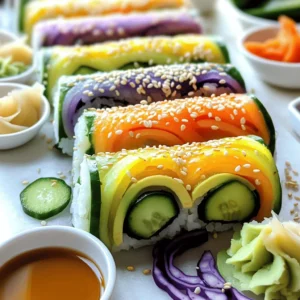

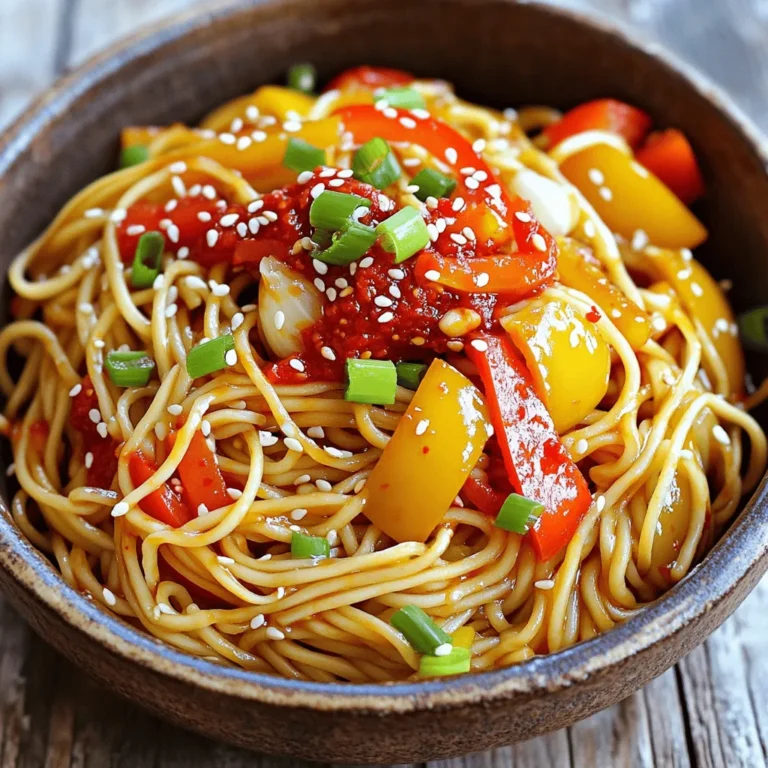
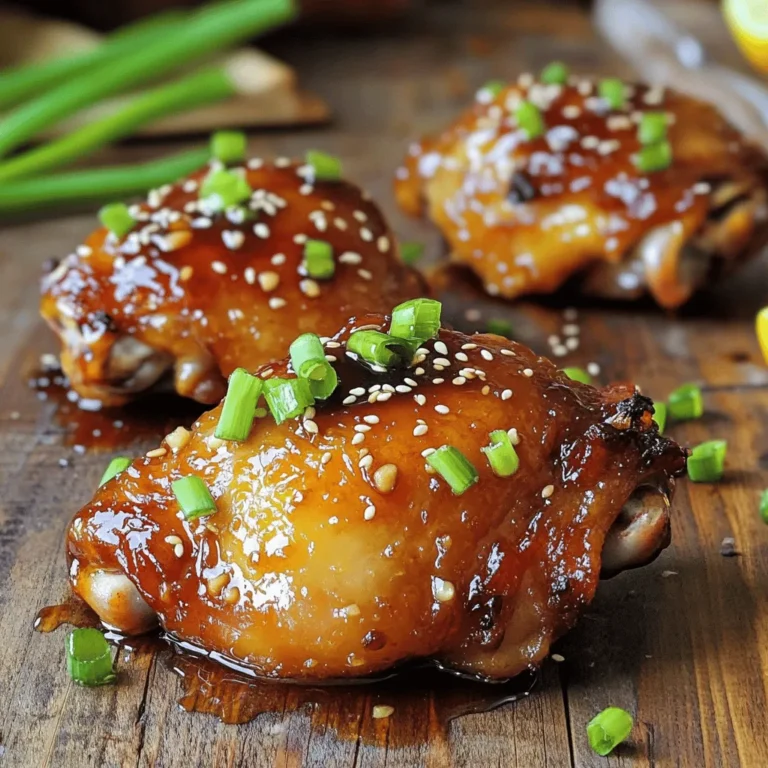



![- 1 can (15 oz) chickpeas - 2 tablespoons extra-virgin olive oil - 2 cups cooked quinoa - 1 cup fresh baby spinach - 1/2 cup cherry tomatoes - 1/2 ripe avocado - Fresh parsley - 1 teaspoon smoked paprika - 1 teaspoon garlic powder - 1/2 teaspoon ground cumin - Sea salt and freshly ground black pepper - 1/4 cup tahini - Juice of 1 medium lemon - 2 tablespoons water In this Crispy Chickpea Power Bowl, each ingredient plays a key role. The chickpeas provide protein and fiber. They become crispy and flavorful in the oven. Olive oil helps them roast perfectly. Quinoa offers a hearty base that fills you up. Fresh baby spinach adds a vibrant crunch. Cherry tomatoes bring sweetness and color to the bowl. Sliced avocado adds creaminess and healthy fats. Parsley brightens the dish with its fresh taste. For seasonings, smoked paprika gives warmth. Garlic powder adds savory depth. Ground cumin brings an earthy note. Sea salt and black pepper enhance all the flavors. The tahini dressing ties everything together. It is creamy, zesty, and rich. Lemon juice adds brightness and balances the tahini. Adjust the dressing's thickness with water to your liking. These ingredients make the bowl not only tasty but also healthy. You can find the full recipe above to make this colorful and nourishing dish at home. - Preheat oven to 400°F (200°C). - Drain and rinse chickpeas. First, I get my oven hot. Preheating it helps the chickpeas get nice and crispy. Next, I open a can of chickpeas. I drain them well and rinse them under cold water. This step removes the can's salty liquid and keeps the flavor fresh. - Toss chickpeas with olive oil and spices. - Roast for 25-30 minutes, shaking halfway. I place the chickpeas on a baking sheet in a single layer. Then, I drizzle olive oil over them. I sprinkle on smoked paprika, garlic powder, cumin, sea salt, and black pepper. I use my hands to toss everything until the chickpeas are well-coated. Then, I put the baking sheet in the oven. I roast them for 25 to 30 minutes. Halfway through, I shake the pan to help them roast evenly. - Combine tahini, lemon juice, and salt. - Adjust consistency with water. While the chickpeas roast, I prepare the tahini dressing. In a bowl, I mix tahini, lemon juice, and a pinch of salt. Then, I whisk these together. If the dressing is too thick, I add water, one tablespoon at a time. I keep mixing until I get a smooth consistency. - Start with quinoa base. - Layer spinach, chickpeas, tomatoes, and avocado. To build my power bowl, I start with cooked quinoa. I scoop a generous layer into a bowl. Next, I add fresh baby spinach. On top, I pile the crispy chickpeas, halved cherry tomatoes, and elegant slices of avocado. Finally, I drizzle the tahini dressing over the top. The colors and textures make it look amazing. For a final touch, I sprinkle fresh parsley on top. Enjoy your nutritious meal! For the full recipe, check out [Full Recipe]. - Ensure chickpeas are thoroughly dried. This step makes them crispy. - Avoid overcrowding on the baking sheet. Give them space to roast evenly. - Adjust with additional water or tahini as needed. Aim for a smooth texture. - Experiment with flavors by adding herbs or spices. Try garlic, dill, or cumin. - Present in deep dish bowls for aesthetics. This makes the meal look appealing. - Add lemon wedges for extra freshness. A squeeze of lemon brightens every bite. For more details on making this dish, refer to the Full Recipe. {{image_4}} You can easily swap chickpeas for black beans or lentils. These options offer great flavor and nutrients. If you want more protein, try adding grilled chicken or tofu. Both options boost protein while keeping the dish balanced. Get creative with your toppings! Nuts or seeds can add a nice crunch. Think about incorporating roasted vegetables for extra flavor. Roasted bell peppers or zucchini can brighten your bowl. They also add great texture and color. To kick up the flavor, use different spices. Try cayenne for some heat if you like it spicy. You can also add feta or goat cheese for a creamy touch. These small changes can transform your power bowl into a new meal experience. For the full recipe, check out the details above. To keep your crispy chickpea power bowl fresh, let it cool first. Once cool, transfer it to an airtight container. If you want the best taste, store the bowl without dressing. This way, the flavors stay bright and the chickpeas remain crispy. For reheating, you can use a microwave or an oven. If you use the oven, set it to 350°F (175°C) and reheat for about 10 minutes. To get your chickpeas crispy again, pop them in the oven. This will bring back their delightful crunch. The bowl tastes best when eaten within three days of making it. Store it in the fridge for the best results. If you want the chickpeas to last longer, keep them separate from the other ingredients. This keeps them fresh and tasty for a few extra days. A power bowl is a nutritious meal that features diverse ingredients. It usually includes grains, vegetables, and proteins. You can mix and match your favorite items to create a unique bowl. The balance of these foods makes it a well-rounded meal. This recipe is already vegan-friendly. Just make sure your toppings are also vegan. You could use nuts, seeds, or extra veggies for added flavor and texture. Yes, you can prepare components ahead of time. Cook the chickpeas and quinoa, then store them separately. Assemble just before serving for the best texture. This keeps everything fresh and crispy. If you want a different base, you have options! You can use brown rice, couscous, or farro. Each choice brings its own flavor and texture. Feel free to experiment and find what you like best. In this blog post, I outlined how to create a Crispy Chickpea Power Bowl. You learned about the main ingredients, fresh components, seasonings, and helpful tips for best results. As you try this recipe, don't hesitate to get creative. Swap ingredients, mix flavors, or add new toppings to make it your own. Enjoy the process and power of healthy eating. You have everything you need to make this dish tasty and fun!](https://tastyrecipes.blog/wp-content/uploads/2025/06/22e45208-b823-498a-a967-fd8087ad4819-768x768.webp)